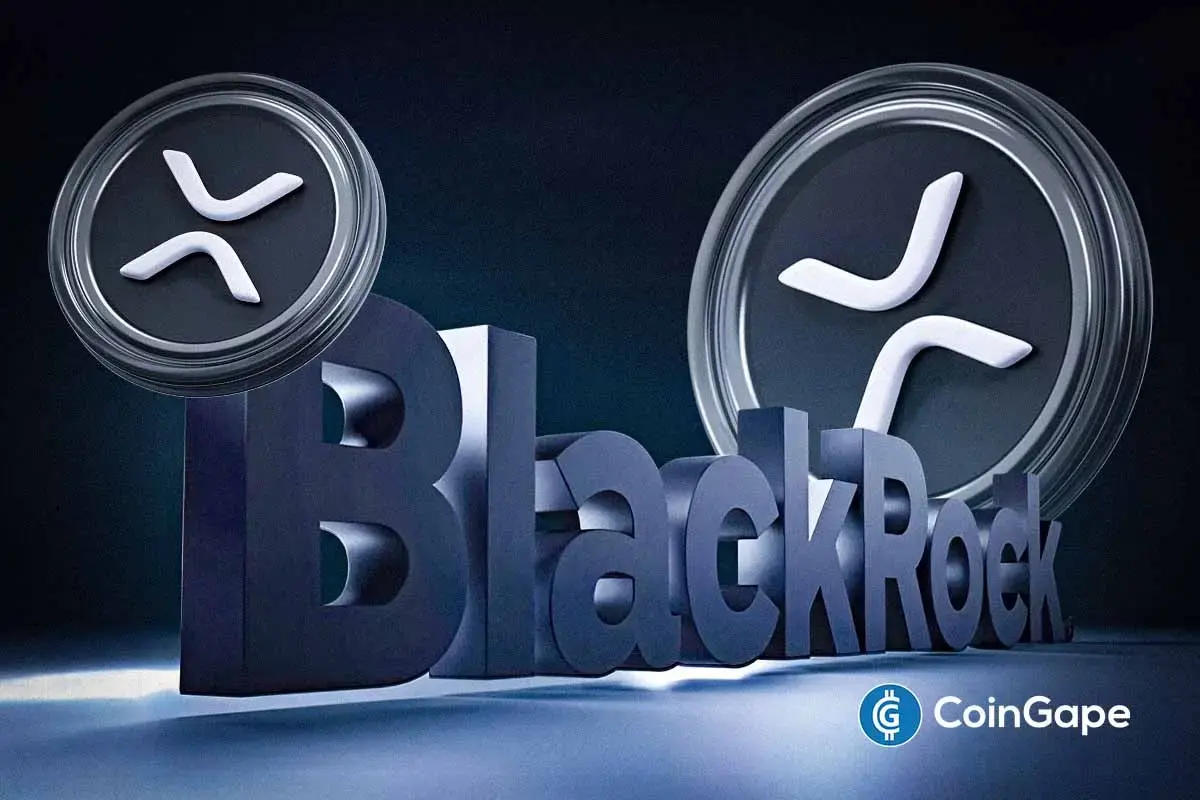Market
Binance Secures Registration in Argentina


BeInCrypto comprehensive Latam Crypto Roundup brings Latin America’s most important news and trends. With reporters in Brazil, Mexico, Argentina, and more, we cover the latest updates and insights from the region’s crypto scene.
This week’s roundup features Binance’s VASP registration in Argentina, Ripple’s expansion into Brazil, and other major developments.
Binance Secures VASP Registration in Argentina
Binance, one of the largest cryptocurrency platforms globally, has reached a major milestone in Argentina by registering as a Virtual Asset Service Provider (VASP) with the country’s National Securities Commission (CNV). This registration strengthens Binance’s commitment to adhering to regulatory frameworks, not only in Argentina but around the world.
Argentina becomes the 20th country where Binance has secured a license or regulatory registration, following the company’s recent progress in key jurisdictions like India, Kazakhstan, and Indonesia. Binance has already established a presence in other major markets, having secured licenses in Dubai, France, Japan, and El Salvador, which continues to solidify its global footprint.
With this VASP registration, Argentine users can now fully access Binance’s suite of services and tools through both its website and mobile app. This move will make it easier for local users to engage in the cryptocurrency ecosystem, offering them the security of a platform that upholds the highest standards of compliance and protection.
“Argentina is a key market for Binance. We will continue to work closely with the local authorities to develop the industry in the safest and most sustainable way possible. This is for the benefit of the crypto community and society in general,” said Guilherme Nazar, Binance’s director for Latin America.
Read more: How To Trade Crypto on Binance Futures: Everything You Need To Know
Nazar also highlighted Binance’s belief in proactive regulation as essential for the orderly and safe evolution of the cryptocurrency industry, a principle that is central to the company’s ongoing global expansion efforts. This regulatory breakthrough further demonstrates Binance’s commitment to creating a secure, compliant environment for its users while advancing the development of the global cryptocurrency market.
Ripple Expands in Brazil Through Partnership with Mercado Bitcoin
Ripple has launched Ripple Payments in Brazil through a partnership with local exchange Mercado Bitcoin. This collaboration will allow businesses to explore cross-border payments using Ripple’s end-to-end blockchain-based payment solution.
Mercado Bitcoin, the first in Latin America to use Ripple’s solution, will enhance its internal treasury between Brazil and Portugal and offer international payments for retail customers. These customers will be able to make payments in reais via a non-resident account, with funds transferred globally 24/7 and settled within minutes.
“Ripple Payments offers capabilities that are important to crypto businesses, enabling them to streamline operations, optimize liquidity, and improve margins through real-time payment settlement. We are delighted to partner with Mercado Bitcoin, a crypto market leader with more than a decade of experience in providing tokenized services to Brazil,” said Silvio Pegado, CEO of Ripple in Latin America.
Read more: XRP ETF Explained: What It Is and How It Works
Ripple Payments will focus on small and medium-sized enterprises, providing optimized onboarding, global access to over 80 payment markets, and 24/7 liquidity. Jordan Abud, Head of Banking at Mercado Bitcoin, added, “The partnership allows Bitcoin Market to take another step towards internationalization…offering lower costs and a more complete platform.”
Ripple Payments currently covers 80 payment markets, with 90% coverage of the FX market and more than $50 billion in processed volume. For now, the service is available to Mercado Bitcoin customers in Brazil and Portugal.
IMF Urges El Salvador to Limit Public Sector Exposure to Bitcoin
The International Monetary Fund (IMF) has once again urged El Salvador to limit its public sector exposure to Bitcoin and to strengthen oversight of its regulatory framework. Despite the country’s notable 3% GDP growth in 2024, the IMF continues to express concerns about the risks posed by cryptocurrency volatility.
Since El Salvador made Bitcoin legal tender, the IMF has conducted several assessments, maintaining that the risks associated with Bitcoin’s price swings remain significant. While the IMF has adopted a more moderate stance compared to earlier years, it still insists on stricter regulations to ensure economic stability.
“We have recommended reducing the scope of the Bitcoin law, strengthening the regulatory framework and oversight of the Bitcoin ecosystem, and limiting public sector exposure to Bitcoin,” said Julie Kozack, IMF communications director, quoted by Reuters.
Read more: Who Owns the Most Bitcoin in 2024?
President Nayib Bukele, currently on an official visit to Argentina, remains a strong advocate for Bitcoin, though he acknowledges that adoption rates in El Salvador have fallen short of his expectations. He expressed a desire for greater acceptance among Salvadorans but emphasized that adopting the cryptocurrency has been a free choice for citizens.
Despite the IMF’s warnings, El Salvador continues to purchase Bitcoin through its Dollar Cost Averaging (DCA) strategy. To date, the government has accumulated 5,892.76 BTC, valued at approximately $360.97 million.
Nubank to Reduce Crypto Transaction Fees
On October 2, Brazil’s Nubank Cripto announced plans to lower the fees for cryptocurrency transactions in its app, with the changes set to roll out gradually through October and November. Under the new system, transaction fees will be based on the volume of customer trades, with potential reductions of up to 60%.
According to Nubank, the fee for buying and selling cryptocurrencies could drop to as low as 0.6% per transaction. Customers will have a 45-day cycle to accumulate transactions, after which the fee will be adjusted according to their trading volume. The new system improves upon the previous average rate of 1.6%, which had already decreased to 0.8% between March and September 2024.
The volume tiers Nubank will use to determine fees are as follows:
- Between 0 and 99 reais
- 100 to 1,999 reais
- 2,000 to 9,999 reais
- More than 10,000 reais
Read more: Crypto vs. Banking: Which Is a Smarter Choice?
This fee structure rewards high-volume traders with lower transaction costs, a common practice in the crypto industry, known as “transaction tiers.” Major platforms like Binance also use a similar model. Nubank Cripto expects all customers to access the new system, though the implementation will be gradual.
Transaction fees, essential for on-chain processes, incentivize miners or nodes to validate transactions. While networks like Ethereum have struggled with high fees for years, Nubank Cripto’s new system aims to offer a more user-friendly experience for its customers.
As the Latam crypto scene grows, these stories highlight the region’s increasing influence in the global market. Stay tuned for more updates and insights in next week’s roundup.
Disclaimer
In adherence to the Trust Project guidelines, BeInCrypto is committed to unbiased, transparent reporting. This news article aims to provide accurate, timely information. However, readers are advised to verify facts independently and consult with a professional before making any decisions based on this content. Please note that our Terms and Conditions, Privacy Policy, and Disclaimers have been updated.
Market
Will Bittensor Surpass Bitcoin as a Store of Value? Expert Predicts

Barry Silbert, CEO of Digital Currency Group, has stated that Bittensor (TAO) has the potential to outperform Bitcoin (BTC) as a global store of value.
His comments come amid notable growth in the Bittensor network, with its subnet ecosystem market capitalization and the TAO token’s price on the rise.
Will Bittensor’s Decentralized AI Model Outperform Bitcoin’s Legacy?
In a recent interview with Raoul Pal, Silbert highlighted the growing influence of artificial intelligence (AI) in the crypto sector. According to him, Bittensor is at the forefront of this revolution, representing the “next big era for crypto.”
“You had the Bitcoin and the Ethereum and the NFTs, and you had the layer 2s and DeFi. I think this is the next big investment theme for crypto,” Silbert stated.
He went on to explain that Bittensor shares the same pioneering spirit as early Bitcoin. Still, its purpose extends beyond financial sovereignty.
“The boldest prediction that I could make for Bittensor is it could be a better version of Bitcoin as a global store of value,” he claimed.
He argued that instead of the $10 to $12 billion spent annually to secure the Bitcoin network, that same amount could be redirected toward incentivizing a global network of individuals working to solve major world problems. He envisions this money fostering innovation on a massive scale, with the potential to grow into a multi-billion-dollar ecosystem.
While acknowledging the value of securing the Bitcoin network, Silbert emphasized that Bittensor’s potential lies in its ability to harness this vast financial backing to address real-world challenges.
He noted that Bittensor operates on a similar economic model to Bitcoin, with halving mechanisms and decentralization, positioning it as a powerful contender in the quest for a more impactful and value-driven global network.
Silbert also noted that while plenty of decentralized AI projects have emerged, Bittensor has set itself apart. He referred to it as having reached “escape velocity.” This term is used to convey a project’s rapid growth and increasing market influence.
“99.9% of crypto tokens that are out there have no reason to exist and are worthless,” he added.
Market data reflects the growing enthusiasm for Bittensor. Notably, amid the ongoing volatility, TAO has fared well in comparison to the broader market, rising 32.1% in the last week. At press time, the altcoin was trading at $328, up 7.2% over the past day.

Additionally, TAO is currently the top trending cryptocurrency on CoinGecko, underlining its rising popularity among investors. Google Trends data further proves the growing interest in Bittensor. The search volume peaked at 100 at the time of writing.
Meanwhile, the Bittensor ecosystem is also seeing notable progress. The latest data indicated that the market capitalization of Bittensor’s subnet tokens more than doubled in April 2025.

It increased by 166%, rising from $181 million at the beginning of April to $481 million at press time. As reported by BeInCrypto, this growth follows a tripling of active subnets over the past year.
Disclaimer
In adherence to the Trust Project guidelines, BeInCrypto is committed to unbiased, transparent reporting. This news article aims to provide accurate, timely information. However, readers are advised to verify facts independently and consult with a professional before making any decisions based on this content. Please note that our Terms and Conditions, Privacy Policy, and Disclaimers have been updated.
Market
XRP Bulls Defend $2.00—Is a Fresh Price Surge Loading?

Aayush Jindal, a luminary in the world of financial markets, whose expertise spans over 15 illustrious years in the realms of Forex and cryptocurrency trading. Renowned for his unparalleled proficiency in providing technical analysis, Aayush is a trusted advisor and senior market expert to investors worldwide, guiding them through the intricate landscapes of modern finance with his keen insights and astute chart analysis.
From a young age, Aayush exhibited a natural aptitude for deciphering complex systems and unraveling patterns. Fueled by an insatiable curiosity for understanding market dynamics, he embarked on a journey that would lead him to become one of the foremost authorities in the fields of Forex and crypto trading. With a meticulous eye for detail and an unwavering commitment to excellence, Aayush honed his craft over the years, mastering the art of technical analysis and chart interpretation.
As a software engineer, Aayush harnesses the power of technology to optimize trading strategies and develop innovative solutions for navigating the volatile waters of financial markets. His background in software engineering has equipped him with a unique skill set, enabling him to leverage cutting-edge tools and algorithms to gain a competitive edge in an ever-evolving landscape.
In addition to his roles in finance and technology, Aayush serves as the director of a prestigious IT company, where he spearheads initiatives aimed at driving digital innovation and transformation. Under his visionary leadership, the company has flourished, cementing its position as a leader in the tech industry and paving the way for groundbreaking advancements in software development and IT solutions.
Despite his demanding professional commitments, Aayush is a firm believer in the importance of work-life balance. An avid traveler and adventurer, he finds solace in exploring new destinations, immersing himself in different cultures, and forging lasting memories along the way. Whether he’s trekking through the Himalayas, diving in the azure waters of the Maldives, or experiencing the vibrant energy of bustling metropolises, Aayush embraces every opportunity to broaden his horizons and create unforgettable experiences.
Aayush’s journey to success is marked by a relentless pursuit of excellence and a steadfast commitment to continuous learning and growth. His academic achievements are a testament to his dedication and passion for excellence, having completed his software engineering with honors and excelling in every department.
At his core, Aayush is driven by a profound passion for analyzing markets and uncovering profitable opportunities amidst volatility. Whether he’s poring over price charts, identifying key support and resistance levels, or providing insightful analysis to his clients and followers, Aayush’s unwavering dedication to his craft sets him apart as a true industry leader and a beacon of inspiration to aspiring traders around the globe.
In a world where uncertainty reigns supreme, Aayush Jindal stands as a guiding light, illuminating the path to financial success with his unparalleled expertise, unwavering integrity, and boundless enthusiasm for the markets.
Market
Vitalik Buterin Proposes to Replace EVM with RISC-V

Ethereum (ETH) co-founder Vitalik Buterin has proposed overhauling the blockchain’s smart contract infrastructure by replacing the Ethereum Virtual Machine (EVM) with RISC-V, a widely adopted open-source instruction set architecture.
This shift aims to address one of Ethereum’s key scaling bottlenecks by dramatically improving the efficiency and simplicity of smart contract execution.
Buterin Proposes Ditching EVM for RISC-V
The proposal was detailed in a post on the Ethereum Magicians forum. In it, Buterin suggested that smart contracts could eventually be compiled to RISC-V rather than EVM bytecode.
According to Buterin, this shift addresses long-term scalability challenges. This particularly includes keeping block production competitive and improving zero-knowledge (ZK) EVM-proof efficiency.
“It aims to greatly improve the efficiency of the Ethereum execution layer, resolving one of the primary scaling bottlenecks, and can also greatly improve the execution layer’s simplicity – in fact, it is perhaps the only way to do so,” he wrote.
Current ZK-EVM implementations spend around half of their proving cycles on EVM execution. By switching to a native RISC-V VM, Ethereum could potentially achieve up to 100x efficiency gains.
Importantly, many fundamental aspects of Ethereum’s architecture would remain unchanged, preserving continuity for developers and users. Core abstractions such as accounts, smart contract storage, ETH balances, and cross-contract calls would function exactly as they do today.
Developers would still write contracts in familiar languages like Solidity or Vyper. These would simply be compiled to RISC-V rather than EVM bytecode. Tooling and workflows would remain largely intact, ensuring a smooth transition.
Crucially, the proposal ensures backward compatibility. Existing EVM contracts will remain fully operational and interoperable with new RISC-V contracts.
Buterin outlines several potential implementation paths forward. The first would support both EVM and RISC-V smart contracts natively. The second suggests wrapping EVM contracts to run via an interpreter written in RISC-V. Thus, it would enable a full transition without breaking compatibility.
The third, more modular approach, builds on the second by formally enshrining interpreters as part of the Ethereum protocol. This would allow the EVM and the future virtual machines to be supported in a standardized way.
Buterin stated that the idea is “equally as ambitious as the beam chain effort.”
“The beam chain effort holds great promise for greatly simplifying the consensus layer of Ethereum. But for the execution layer to see similar gains, this kind of radical change may be the only viable path,” Buterin added.
For context, the Ethereum Beam Chain is a redesign of Ethereum’s consensus layer (Beacon Chain). It focuses on faster block times, faster finality, chain snarkification, and quantum resistance. The development will likely begin in 2026.
This proposal fits into Ethereum’s broader vision of modularity, simplicity, and long-term scalability. Previously, BeInCrypto reported on Buterin’s privacy-centric plans for the blockchain.
The proposal focused on integrating privacy-preserving technologies. Moreover, the Pectra upgrade is also nearing, with the launch expected on May 7.
Meanwhile, ETH continues to face market headwinds, trading at March 2023 lows. This year has been quite hard for the altcoin, as it saw a decline of 50.8%. In fact, Ethereum dominance hit a 5-year low last week.

Nonetheless, BeInCrypto data showed a slight recovery over the last 14 days. ETH rose by 6.1%. Over the past day alone, it saw modest gains of 1.7%. At the time of writing, ETH was trading at $1,639.
Disclaimer
In adherence to the Trust Project guidelines, BeInCrypto is committed to unbiased, transparent reporting. This news article aims to provide accurate, timely information. However, readers are advised to verify facts independently and consult with a professional before making any decisions based on this content. Please note that our Terms and Conditions, Privacy Policy, and Disclaimers have been updated.
-

 Market17 hours ago
Market17 hours ago1 Year After Bitcoin Halving: What’s Different This Time?
-

 Ethereum23 hours ago
Ethereum23 hours agoEthereum Consolidates In Symmetrical Triangle: Expert Predicts 17% Price Move
-

 Market21 hours ago
Market21 hours agoMELANIA Crashes to All-Time Low Amid Insiders Continued Sales
-

 Market23 hours ago
Market23 hours agoToday’s $1K XRP Bag May Become Tomorrow’s Jackpot, Crypto Founder Says
-

 Market22 hours ago
Market22 hours agoCharles Schwab Plans Spot Crypto Trading Rollout in 2026
-

 Market18 hours ago
Market18 hours agoVOXEL Climbs 200% After Suspected Bitget Bot Glitch
-

 Ethereum22 hours ago
Ethereum22 hours agoEthereum Enters Historic Buy Zone As Price Dips Below Key Level – Insights
-

 Altcoin19 hours ago
Altcoin19 hours agoXRP Leads Crypto Shopping List For Latin America Ahead Of ETH, SOL—Report





















